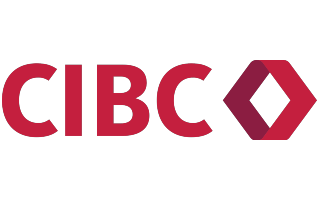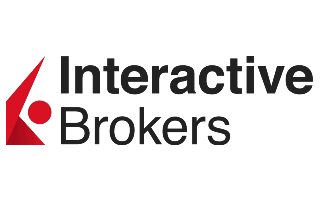If there’s one piece of advice the investing experts agree on, it’s this: the time to start is now. The sooner you begin, the sooner you can begin to compound your gains. For most of us, this means buying stocks (or similar assets like ETFs). While equities can go down at times, over time the market itself goes up – at several times the pace of a savings account. Whether you have some or no experience with investing, this guide can help you get started.
Before you start investing: Get your finances ready
You want to invest money you won’t need right away so it has time to grow. You’ll need to do a few things first:
- Build your emergency fund. The common recommendation is three to six months of living expenses. You don’t need to keep this money in your savings though. A money market fund (which is a highly liquid fund and equivalent to having the account in cash) at a broker will work fine.
- Pay off high-interest debt. If your credit cards hit you with double-digit interest rates, you’ll save more by eliminating that debt first than you’d gain with a lot of investments over the short term. Most experts advise you to put any extra cash towards high-interest debt, and start investing only once your high-interest debt is paid off.
- Commit to your employer-sponsored retirement plans to claim any match. If your employer matches even 25% of the money you put into a retirement plan, that’s an immediate 25% gain on your investment! Don’t pass up free money.
With those goals in hand you can open an online trading account account (if you don’t have one already) and start investing.
How to start investing in Canada in 5 steps
1. Solidify your investment goals
We all want to maximize our returns. Your best bet for achieving your goals is by creating realistic ones that you can stick to and work towards.
Think about what you will use your returns for: Is it going to be used for retirement? To buy a house? Or is it for something less consequential, such as a vacation, general savings or even “fun money?” Is it going to be used to offset inflation?
Defining your investment goals will inform the following steps.
2. Define your time frame
Your timeframe will be heavily dependent on your goals, and it will inform the amount of risk you can take on. Investments regularly rise and fall, and the choices for what to invest in, what account type to invest with, and how you can reasonably expect your investment to perform depend on how long you plan to keep your money invested.
- Long term: Investors with long-term or retirement goals often keep their money in the market for decades and reinvest their dividends in order to maximize the compounding of their returns. Even if markets crash, they have faith that prices will rebound before they reach their goal and need to cash in their investments.
- Medium term: Investors with medium-term goals may be approaching their goal in the next few years. They generally ignore small corrections but may be following a risk management strategy like a hard stop-loss or trailing stop-loss to protect their portfolio during bigger corrections or bear markets.
- Short term: Investors or traders who put their money to work for temporary opportunities or seasonal trends often develop plans for when to buy and sell or follow technical chart signals, since the timeframe is shorter and the stakes are higher.
Your goal and timeframe will inform the assets you will invest in. For instance, the longer you are planning to invest, the more you can afford to invest in more variable assets like stocks. You can therefore hold fewer cash equivalents, like bonds, because dips in the market won’t have a huge impact on your portfolio by the time you need to access your money. This contrasts with medium term investors, who may want to take a more balanced approach between equities and cash equivalents since they need their money sooner.
3. Decide how much risk you can tolerate
There are 2 types of risk: activity risk and investor risk.
Activity risk
There are 5 main asset classes, and each carries its own typical level of risk. In order from least to most risky, it generally goes: cash, government bonds, corporate bonds, rental real estate and stocks.
Risk typically means unpredictability of returns. With cash, you know how much you have, you know how much interest you’ll get, and you know you won’t lose any of your capital based on government insurance. What you don’t know is a) how high inflation will be and b) how likely your bank is to go under — although the latter has historically been a rare thing.
On the other hand, with stocks, you have much less of an idea about how much the price will fluctuate or how the dividend payout will change. This is why they are seen as the riskiest mainstream asset.
If you can’t afford to be down in a given year (or simply can’t stomach much risk), you should put more of your money into cash equivalents: government bonds and investment-grade corporate bonds — in other words, bonds from very stable companies. If you could afford to be down more — say, 15% to 30% of your portfolio — in a bad year, and you would feel comfortable with that level of risk, then you could allocate more money to stocks.
Investor risk
Similar to the difference between a child driving a car and an adult driving a car, there is also risk in the person investing. A new stock trader is taking more risk than an experienced stock investor simply because they are less familiar with trading. You can reduce this risk by learning about and trying different investment strategies with a small portfolio, then expanding as you gain understanding and expertise in a particular asset type or strategy. You can also mitigate your investor risk by putting some or all of your portfolio with a robo-advisor to the work for you while you watch and learn.
The best way an investor can minimize their risk is by diversifying their portfolio. This means spreading out their risk among a number of sectors, industries and stocks rather than betting everything on one.
Remember that the more risk you take on, the more potential upside you face, but the more you could stand to lose. Regardless, there is a strategy for every risk level so that no matter how much risk you are comfortable with, you can invest in the market and don’t need to keep your extra money sitting in cash.
A note about risk
In considering how much risk you can tolerate, remember that any drops (or gains) to your assets are only realized when you sell the asset. While it can be tough to watch your portfolio’s value drop, experts always advise holding on to your investments during normal economic downturns (and some even recommend putting more spare cash into the market at these times). Asset values are bound to rise and fall, while the market goes up over time.
4. Select your investment strategy
There are two main strategies: passive and active investing.
If you don’t want to keep an eye on your portfolio, consider a passive method like a robo-advisor.
If you want to be an active investor with full control over your portfolio, you’ll need to select a stock trading platform. In the case of real estate investing, you can buy and manage property – a hands-on job – or pick one of the brokers that will sell you a piece of a deal.
5. Pick the right trading platform to start investing
Make sure you vet your brokerage by looking at their fees, account types, investment options, customer service, order types and reviews.
Finder Score for stock trading platforms
To make comparing even easier we came up with the Finder Score. Trading costs, account fees and features across 10+ stock trading platforms and apps are all weighted and scaled to produce a score out of 10. The higher the score the better the platform - simple.
When to start investing
The short answer: as soon as possible!
Because of the power of compounding, the earlier you invest, the more you’ll make in returns. The compounding effect occurs because the interest you make continues to earn interest. Reinvesting the interest or dividends you make means that your money grows faster over time — it snowballs.
For example, Megan starts investing at age 25. She invests $200 every month with a 6% return. By the time she turns 65, her portfolio would be worth $393,700. If Jordan started investing $200 per month at the same rate of return (6%), but he started investing at age 35, his portfolio would be worth $201,100 by age 65. Because of the power of compounding, Megan’s portfolio is worth almost double Jordan’s even though they invested the same amount at the same rate of return.
The other reason to invest as early as possible is inflation. Let’s just a meal at your favourite diner costs $10 in 1995. Based on inflation, that same meal at your favourite diner in 2022 would cost you $17.32. This is because there was a 73% change in the value of a dollar between the years 2000 and 2022. So, if you took a $10 and put it under your mattress in 1995, today that money would buy you a little over half of your favourite diner meal.
Pick the right trading accounts
There are several investment account types to start investing in stocks or any other regulated type of investment.
- Employer-sponsored or employer-matched retirement plans: These must be set up by an employer and offered to employees. While asset selection is commonly limited within these plans, a big advantage is the potential for your employer to match the amount of money you contribute to the account.
- Registered Retirement Savings Plan (RRSP): RRSPs offer the benefit of tax-free contributions and growth – you only have to pay tax when you withdraw funds (when you are retired and therefore in a lower income tax-bracket). These types of accounts are meant for long-term investment, because you’re heavily taxed on any pre-retirement withdrawals. You can have your investments professionally managed, self-managed or selected and maintained by a robo-advisor. Since this is a registered account, you cannot day-trade in an RRSP.
- Tax-Free Savings Account (TFSA): While RRSPs let you make tax-free contributions, TFSAs let you make tax-free withdrawals. This means 100% of your returns are yours to keep, and you can’t deduct TFSA deposits from your income tax. Like RRSPs, you can have your investments managed for you, or you can self-manage. Day trading is not allowed in a TFSA.
- Taxable investment (non-registered) account: Invest using a normal investment account without any contribution or withdrawal limitations, though capital gains will be taxed.
Taxes on investments
When you invest outside of certain tax-advantaged accounts, you will owe taxes on the money you make, including dividends and gains. Qualified dividends and long-term capital gains (investments held a year or longer) are part of your taxable income – but only on 50% of what you make. So, if you realized a capital gain of $10,000, you’d only have to add $5,000 of this amount to your taxable income.
Understanding assets
An investment can be anything you think will increase in value over time, but for most people it starts with stocks and bonds. Here’s a deeper look at those investment options:
Individual stocks
In any given year, countless stocks outperform the market average. Tesla grew by nearly 700% just in 2020. Netflix went up 3,900% in the last decade. No question, it’s fun to own the right hot stocks.
But in investing, winning big generally means bigger risks. While many investors start with individual stocks, as you build a portfolio, it’s best to keep stock-picking to a portion of your portfolio dedicated to riskier investments. Keep the bulk of your portfolio in safer places, such broad-market index funds, and mind your mix of large blue-chip stocks vs. riskier mid- and small-cap stocks. Again, this depends on your risk level, but all experts agree that diversification is important in mitigating losses.
Mutual funds and ETFs
Most financial advisors would point novice investors to exchange-traded funds or low-cost index mutual funds before buying a lot of individual stocks. A total market fund will give you a piece of every company in the market; an S&P 500 ETF will give you a piece of the 500 largest.
What they give you is a diversified portfolio across companies and across sectors, which is how you get that steady growth over the long term. When one stock goes down, others go up. To do this with individual stocks is tough; the experts say it takes 20 or 25 stocks at minimum to build a properly diversified portfolio, which takes a large portfolio given the price of market-leading stocks.
In general, ETFs track indexes, matching their performance at a lower cost than mutual funds. You can think of ETFs as a diversified basket of stocks. Mutual funds have active managers who try to juice returns based on different strategies, so they cost more than ETFs. But there are indexed mutual funds and actively managed ETFs, so study the strategy, the track record and the fees closely before you buy. You can read more on the difference between ETFs and mutual funds in our guide.
Consider broad index funds as the basics. Over time, you may want to add sector funds, commodity funds and other classes as you become more comfortable targeting your investments and have more money to work with.
Bonds and bond funds
Bonds are the traditional hedge for a diversified portfolio. When stocks go down, bonds usually go up, though the returns are generally lower.
The old rule used to be to hold your age in bonds – at age 30, 30% bonds, at age 60, 60% bonds. But bond returns have been so much lower for so long that new rules have emerged. One says subtract your age from 110 and put the remainder in stocks. So at 30, you’d be 80% stocks, 20% bonds. Investing sage Warren Buffett has talked about a 90/10 mix for even retirees, with the bulk in a broad market index fund.
You can also buy actual bonds, junk bonds and build ladders of bonds reaching maturity at different times.
GICs
A GIC is a guaranteed investment contract, whereby the company issuing the GIC guarantees the investor a specific rate of return in exchange for your deposit. GICs vary in return based on how long you commit to hold onto the GIC (and in exchange, how long the issuer has your money). GICs are an extremely low-risk way to invest.
Other investment options
- Residential property: A home is a common investment, as value tends to increase over time.
- Life insurance: Some types of life insurance — like whole life, variable life or universal life — have a cash value component that produces a guaranteed and/or variable return.
- Exotic assets: These could include wine, art, cars or anything that could increase in value over time.
- Peer-to-peer lending: These are websites that allow you to loan money to individuals or businesses for a set rate of interest. It’s possible to earn more on these loans than you would make in cash, but some people are wary of this relatively new financial product.
Bottom line on how to start investing in Canada
The keys to getting started with investing are having a plan and understanding the assets you’re investing in. If you can handle the volatility of investing and want to try to make it work harder than it would in a savings account or GIC, there is an opportunity to grow your money. Evaluate your options and compare the products and services that will help you achieve your goals, starting with online trading platforms.
If you’re looking for more beginner-friendly investment help, you can read more on how to buy stocks here.
Frequently asked questions about how to start investing
More guides on Finder
-
How to buy Newsmax (NMAX.US) stock in Canada
Everything we know about the Newsmax IPO plus information on how to buy in.
-
How will tariffs affect the stock market?
Find out how the Trump tariffs will impact the stock market and explore Canadian stocks that may be resilient amidst tariffs.
-
What are the best stocks for beginners with little money to invest?
Want to dive into investing but don’t have much to spend? Take a look at these types of stocks.
-
TD Easy Trade review
Use this self-directed trading app to learn the basics of investing with a streamlined app and a number of free trades annually.
-
Best renewable energy stocks
These are the best renewable energy stocks to buy now in Canada.
-
10 best trading platforms and apps in Canada for 2025
Whether you’re a new or experienced investor, these are the best stock trading platforms and apps in Canada.
-
How to invest in the S&P 500 in Canada
Find out how to invest in the S&P 500 in Canada—one of the world’s most popular stock indices—to diversify your portfolio.
-
TD Direct Investing Review
Make quick and easy trades using this reputable online trading platform from TD.
-
RBC Direct Investing review
Here’s what you need to know about the benefits and shortcomings of this Big Bank investment platform.
-
Questrade review
Questrade is a leader among Canadian discount brokerages, but is it right for you? Compare fees, features and alternatives here.




